Canyon Has Rolled Out a Major Update to Its Hardtail Mountain Bike
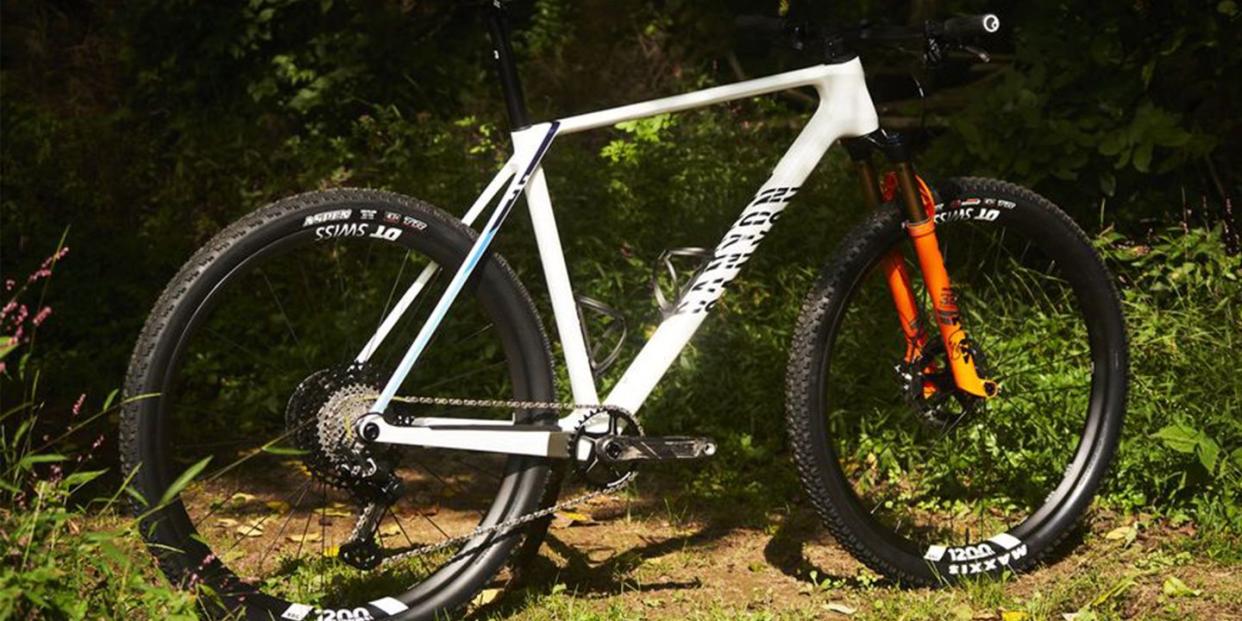
The Takeaway: The Canyon Exceed is a rare example of a newly updated mountain bike that did not get beaten with the long, low, slack stick. The result is a ride that exquisitely balances the desires of the technically astute who crave challenging trails with the climbing prowess and high-speed handling sought by weight weenies, mountain goats, and downhill daredevils.
Extremely tight and agile handling feels super on technical trails
Compliant rear triangle smooths out trail bumps as much as can be expected on a hardtail
North American models come with the lightest dropper post currently made
Price: $6,999
Weight: 19.6 lb. (XL)
PRE-ORDER MORE IMAGES
Canyon has rolled out a major update to its hardtail mountain bike, the Exceed, and tucked into the the bike is an interesting design choice that may be a sign of the next phase in the evolution of XC machines.
Gravity-oriented bikes have been getting longer, lower, and slacker for years. Cross-country bike designers, while slow to jump on the bandwagon, started heading that way as well, albeit not to the same extent. Specialized, BMC, and Cannondale made the biggest jumps in the XC category. All three brands have short travel, full-suspension options with angles previously reserved for trail bikes, and only the latter hasn’t recently updated its hardtail in a similar fashion. Without fail, each brand points to the increasingly challenging nature of World Cup courses as the reason for these changes, where downhill capability can make the difference between wins and losses.
Canyon purposefully strayed from that trend, and that’s where it gets interesting. For years, road bike design was race-centric, catering to the demands of professional racers. The current focus on non-racers (see endurance and gravel bikes) is a recent evolution stemming from a realization that most people who buy bikes aren’t racing them. Cross-country mountain bikes, slow to follow their skinny-tire brethren, are still stuck in the for-pro-racers-only rut. Brands are making these bikes to perform under the unique demands of the highest level of racing on a very specific kind of course. In doing so, they ignore the fact that most of us aren’t likely to race (or even ride) courses like the notoriously technical World Cup track at Novo Maestro.
Make no mistake about it, the latest crop of XC bikes is made up of amazing machines. But as cross-country design gets pushed down the longer, lower, slacker track, it becomes increasingly likely that not every bike is right for every style of riding or racing. The new Scalpel and Epic are the amazing World Cup-level race bikes, but I found neither handle low speed, technical trails like the models they replaced. In that style of terrain, steeper angles and higher bottom brackets perform better. For riders on the West Coast, or regions of the East with more mountainous terrain where speeds are higher and downhills can be measured in miles, not minutes, descending ability is at a premium. Slacker angles and lower bottom brackets make sense because that design works better at high speed.
Longer and Slacker, But Still Very Aggressive
That brings us back to the Exceed. On paper, with its 69-degree head angle and only 58mm of bottom bracket drop, it falls squarely in the middle of the range of hardtail XC bikes. However, it stands out as the only new bike that doesn’t reside on the long, low, slack end of the spectrum. Sure, it’s slacker that its predecessor, but only by one degree. Reach was extended by a full centimeter to 475mm, and Canyon also shortened the rear center by 2mm. Next to the BMC TwoStroke and its 67-degree head angle and 64mm of bottom bracket drop, it’s a stark difference.
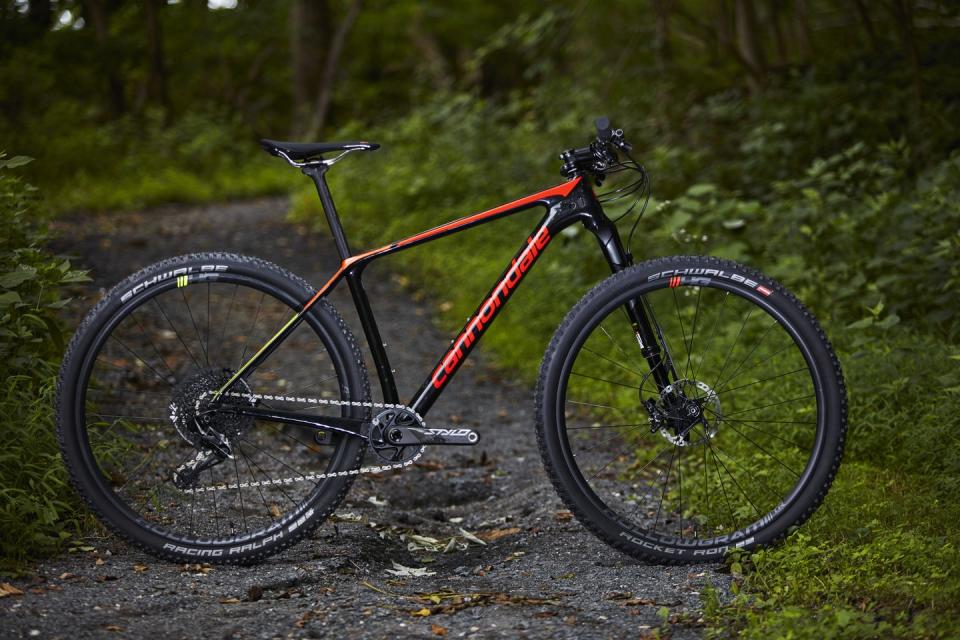
When I asked why Canyon resisted the trend that so many others had embraced, a rep said the brand wasn’t interested in a race to the extremes of bike design, but rather set out to make a bike with more balanced performance.
5 Things We Love About the Canyon Exceed CFR LTD
There’s another factor at play here: recognizing the limitations of a hardtail and how the bike is most likely to be used. It won’t be the bike of choice for riders who want big-time descending capability. Canyon engineers wanted a bike that can rip the climbs, is agile and maneuverable on tight trails, and can hold its own on the descents. I’ve ridden (and raced) multiple versions of hardtail mountain bikes from the biggest players in the XC field—not to mention the previous version of the Exceed—on everything from the rock-strewn backcountry trails of the Mid-Atlantic to the high-altitude fire roads of Leadville, and the fast, flowy descents of SoCal. In my opinion, they nailed it.
Insanely Light
My Exceed CFR LTD, size XL, tipped the scales at just over 19 pounds without pedals. That’s the lightest frame with the most expensive build. My test bike got the European-market-only build with Shimano XTR and a Fox 32 Step Cast Factory Remote fork instead of the SRAM XX1 Eagle AXS drivetrain, RockShox SID SL Ultimate Raceday Remote fork, and DT Swiss D 232 One dropper post that’s available in North America. Canyon claims a medium CFR frame—with hardware—weighs just 835 grams. Suffice to say, this bike made climbing as pleasurable as possible for my 180-pound frame.
Canyon CFR LTD Details
Material: Carbon
Wheel Size: 29-inch
Fork: 100mm Fox 32 Step Cast Factory Remote
Drivetrain: Shimano XTR 1x12-speed
Cranks: Race Face Next SL G5 Carbon
Chainring: 34t
Cassette: 10-51
Brakes: Shimano XTR
Wheels: DT Swiss XRC 1200 Spline
Tires: 2.35-inch Maxxis Ikon EXO (front), 2.25-inch Maxxis Aspen (rear)
Saddle: Selle Italia SLR KC Boost
Seatpost: Canyon VCLS 2.0
Handlebar: Canyon CP08 CF one-piece cockpit
Tire Clearance: 2.4 inches on 30mm rim
Sharp, Precise Steering
The last XC bike I tested, the BMC Twostroke 01 One, was decidedly modern. Compared to that one, the exceptionally tight handling of the Exceed was immediately apparent, as was the higher bottom bracket, on my home trails in southeastern Pennsylvania. A low center of gravity is great for steep descents, where there’s minimal pedaling to be done. But as soon as you go uphill and have to navigate rocks and roots, pedal strikes become an issue. On the Exceed, I was able to keep pedaling through the kind of uphill rock gardens that, on other bikes, give me trouble because I have to be more diligent about pedal placement. Furthermore, rear wheel traction and the ability to navigate tight switchbacks, both up and downhill, was amazing. That was most evident when venturing onto the trails around Palm Springs, California, known for steep grades carved into the side of mountains, loose dirt, rocks, sand, and ridiculously tough switchbacks—the kind of trails that make riders with less-than-professional-level handling skills spend extended periods of time walking. Of the three bikes I took onto those trails, the Exceed CFR LTD, the Specialized Epic Hardtail Pro, and the Specialized S-Works Epic, the Canyon was superior on the tight stuff.
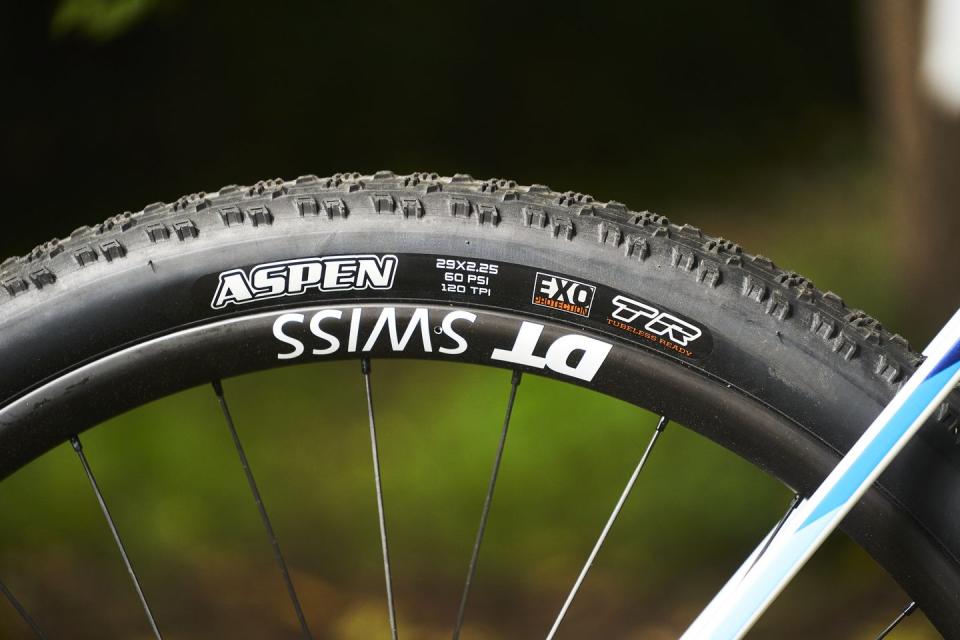
No Slouch on the Descents
Naturally, when downhill speed increased and rocks and divots became more frequent, the limitations of a hardtail became apparent. And at times I found myself ruing the fact that my bike didn’t have the dropper post found on the bikes sold in North America. Regardless, the sharp handling made for a bike that was very exciting to pilot through technical and high-speed trails. I carved through turns and popped over small jumps and drops with a child-like grin on my face.
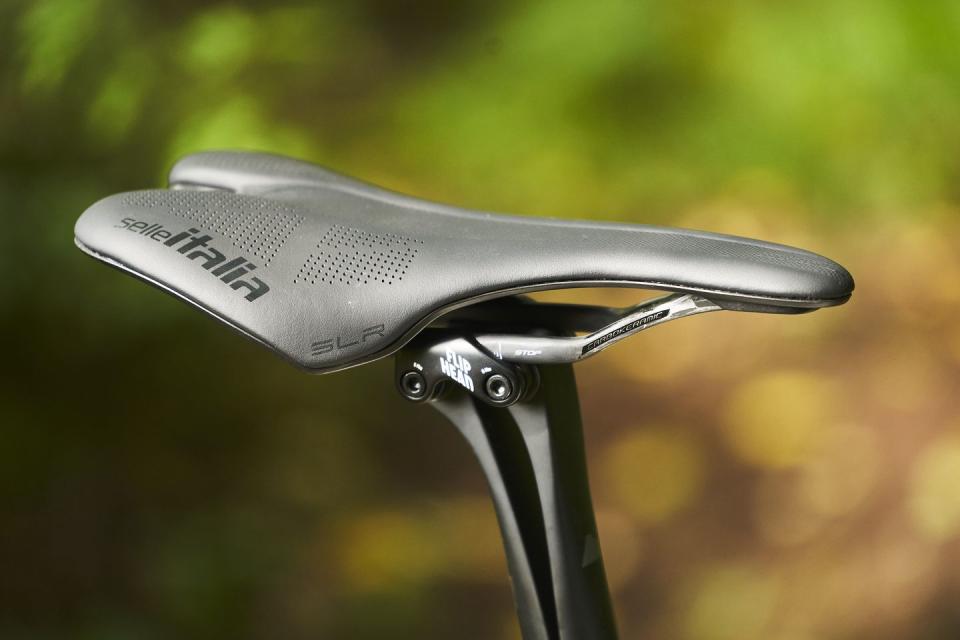
Exceed Family
Canyon has three other bikes priced below our $6,999 Exceed CFR LTD, which, while pricey, is still an amazing value compared to the $8,600 you’d drop on a comparable Cannondale F-Si and the 9,000 bones you’d shell out for Specialized’s S-Works Epic Hardtail.
The Exceed CF SLX is second in line and hung with a SRAM X01 drivetrain, DTSwiss dropper post, Fox Performance fork, and carbon DTSwiss XRC1700 Spline hoops. It also has the same one-piece carbon cockpit as the CFR LTD. For $4,499 you can have that rig shipped right to your doorstep.
The Exceed CF 8 arguably presents the greatest value. The frame is roughly 500 grams heavier than the CFR LTD, but for $3,499 you get Shimano’s excellent Deore XT groupset (albeit with an SLX shifter), a Fox Performance Elite fork, and carbon wheels from Reynolds.
The Exceed CF 7 is the cheapest at $1,999. It has SRAM’s most budget-friendly groupset, NX Eagle, and, amazingly for this price, carbon wheels from RaceFace.
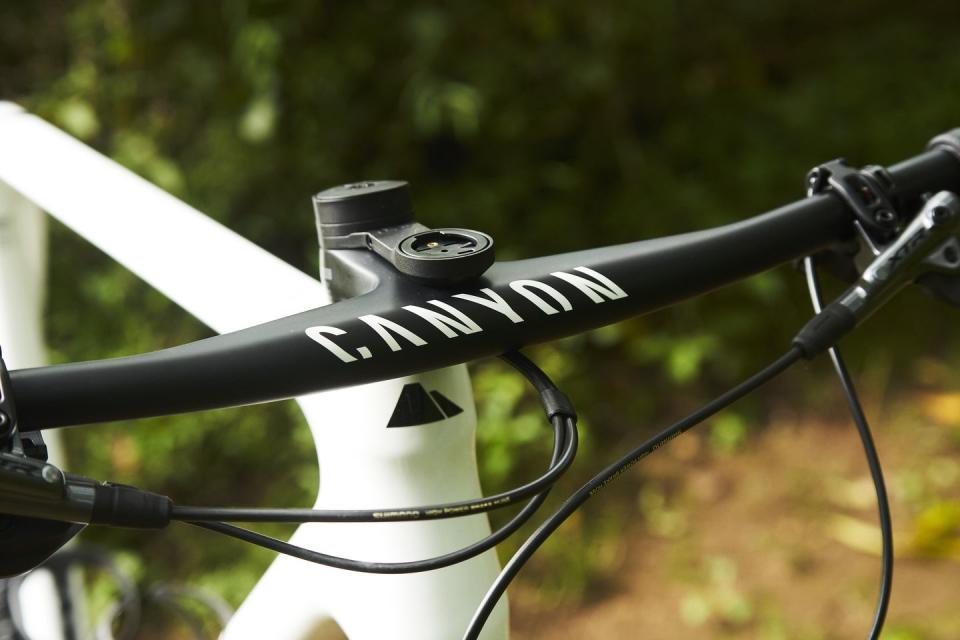
Where Do We Go From Here?
The Exceed is a hardtail for the purists, for those who enjoy an unencumbered and unfiltered trail riding experience. Despite the aggressive geometry, it’s also a great bike for those who live in mountainous terrain and love long climbs and flowy descents. And because of the almost unparalleled value Canyon offers, some of the less expensive models are amazing options both for those looking to buy a first bike or who want a high-performance ride without the commensurate price tag.
It’s unwise to declare the death of the long, low, slack era of cross-country bikes. However, this may signal a much-needed diversification of design within the category. As with road bikes, consumers win when options increase. A hardtail that’s perfect for me in Pennsylvania isn’t necessarily great for a rider in SoCal, although the Exceed did quite well in both environments. And if you’re a recreational rider who likes to shred all kinds of terrain, you might not be best served by a hyper-specialized bike that’s the longest, the lowest, and the slackest. Niche bikes are great because it means more riders have the chance to find the one that’s exactly right for the way they like to ride. But it’s also refreshing to see a bike that walks a comfortable middle ground for those who enjoy variety.
You Might Also Like

